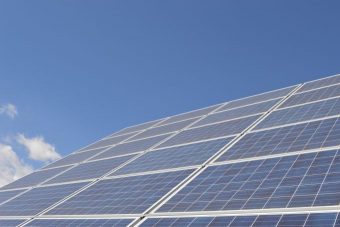
Most traditional solar cells aren’t able to convert long-wavelength photons into electricity. A team of researchers led by Matthew Lumb at The George Washington University is hoping to change that in order to capture more power. They’ve designed a solar cell that can harvest just about all of the energy in the solar spectrum – and it could become the world’s most efficient solar cell with an efficiency of 44.5 percent.

The scientists created a prototype of their solar cell that differs from most others: they stacked multiple solar cells to create a single device that can capture nearly all the solar spectrum’s energy. And as opposed to the solar panels that adorn many rooftops, this new solar cell utilizes concentrator photovoltaic (CPV) panels that concentrate sunlight onto micro-scale cells using lenses.
The cell works something like a sieve for sunlight, as each layer absorbs a certain set of wavelengths, to capture nearly half of available energy – most traditional cells only capture around one quarter.
Efficiency is one of the main goals of any researcher working on solar cells, and these scientists obtained what could be the highest efficiency in the world using materials based on gallium antimonide (GaSb) substrates. A technique called transfer-printing allows the tiny cells to be constructed with great precision.
But this groundbreaking solar cell wasn’t cheap. Still, though the materials utilized were expensive, the scientists think the technique to build the cells is promising to show how efficient a solar cell could be. In the future they think a similar product could hit markets “enabled by cost reductions from very high solar concentration levels and technology to recycle the expensive growth susbtrates.”
The journal Advanced Energy Materials published the research this week. 12 scientists from the United States Naval Research Laboratory and other American institutions collaborated with Lumb on the paper.
Source: inhabitat.com



